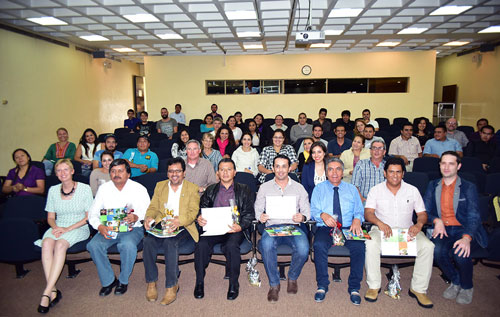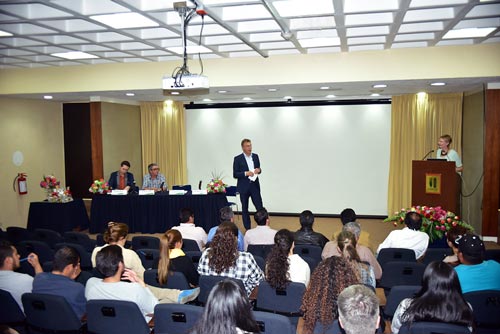
Nele Verhulst, Strategic Research Coordinator of the Global Conservation Agriculture Program (GCAP), led CIMMYT’s 21st International Training Course on Conservation Agriculture from 25 May-26 June 2015. A total of 132 people have taken the course since its inception. This year, participating researchers from Guatemala, Peru, Ecuador and Mexico were trained in sustainable technologies and conservation agriculture (CA).
Field tour in the central valleys of Mexico. Photo: Gabriela Ramírez“During the course, we encountered different situations that…will allow us to better recognize the challenges and opportunities we will face when we return to our home countries,” said José Vásquez from Guatemala, who gave the closing speech during the course’s graduation ceremony. He added that the five weeks of the course are extremely relevant for successfully carrying out extension work in their countries.

A particular challenge of CA, according to Vazquez, is that “one size” does not fill all, and precepts must be adapted to local settings, with involvement of all actors, including farmers. “This implies that we will have to be extremely creative when listening to farmers and interpreting what they say, and even more so when asking them to adopt the technologies we have to offer,” said Vásquez.
CIMMYT Director General Martin Kropff explained CIMMYT’s role as a research organization and highlighted the crucial part it plays as a capacity building NGO.

“This role is indispensable for creating links with the different national systems, and for CIMMYT it is essential to share the knowledge it acquires. That is why we would like to propose a new project, CIMMYT Academy, which will bring together all the short-, medium- and long-term training activities available,” Kropff said.
Kropff concluded by reminding each participant of the role they have as CIMMYT ambassadors to their own countries and expressed his hope for continued collaboration in the future. Further reading on the course may be found here on Inside CIMMYT.
 Nutrition, health and food security
Nutrition, health and food security 
